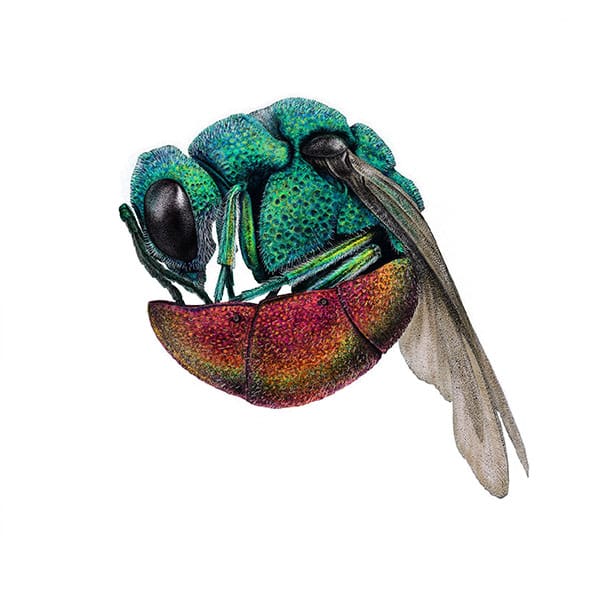This entomologically-inclined illustrator marries painstaking precision with boundless curiosity to create work that belies his years.
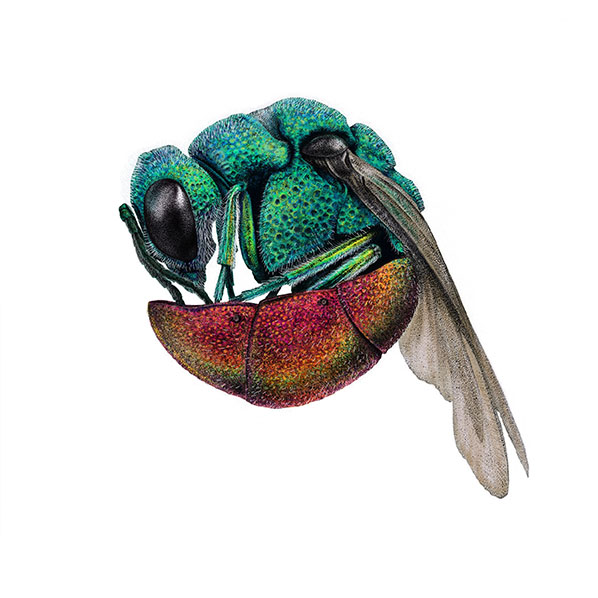
What are the best and worst aspects of what you do?
I think one of the downsides to freelance Illustration is the unpredictable nature of work – sometimes there might be quite a few commissions on the go, sometimes it gets very quiet. One of the best aspects would be the range and variety of work that I produce, and the constant development and learning that has to take place to get each piece right, which is especially evident in the entomological field where each specimen image must be very accurate in terms of anatomy. Of course, one of the things I value most is being able to take my passions for insects, natural history and the darker side of nature, and turning these ideas and references into creative work.
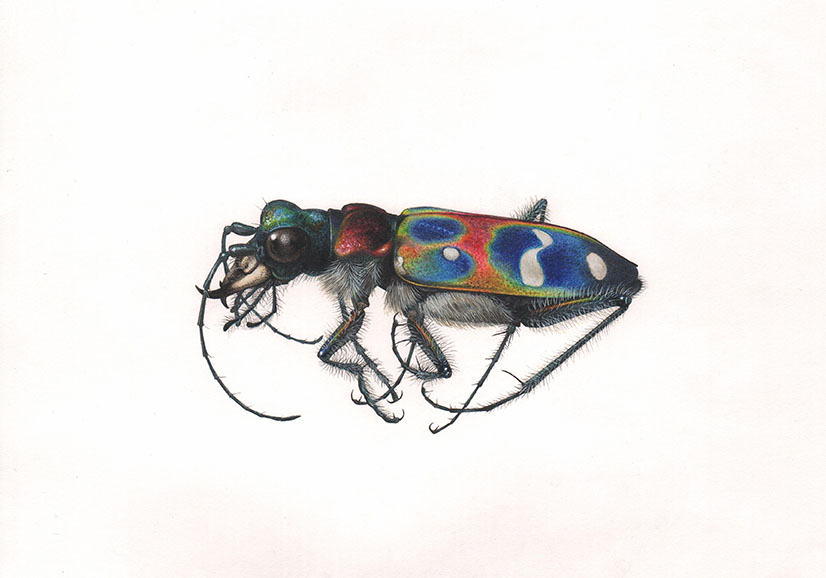
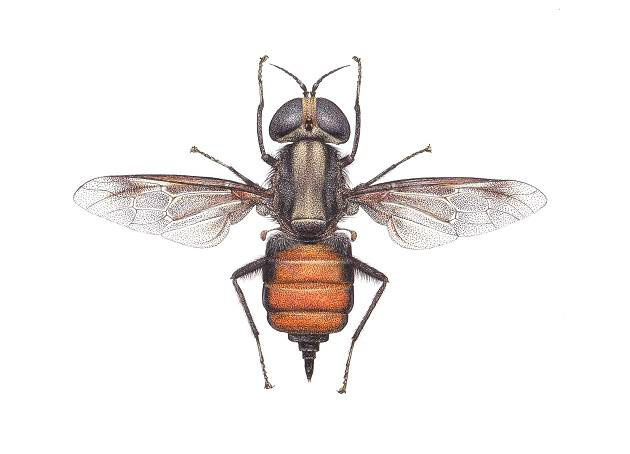
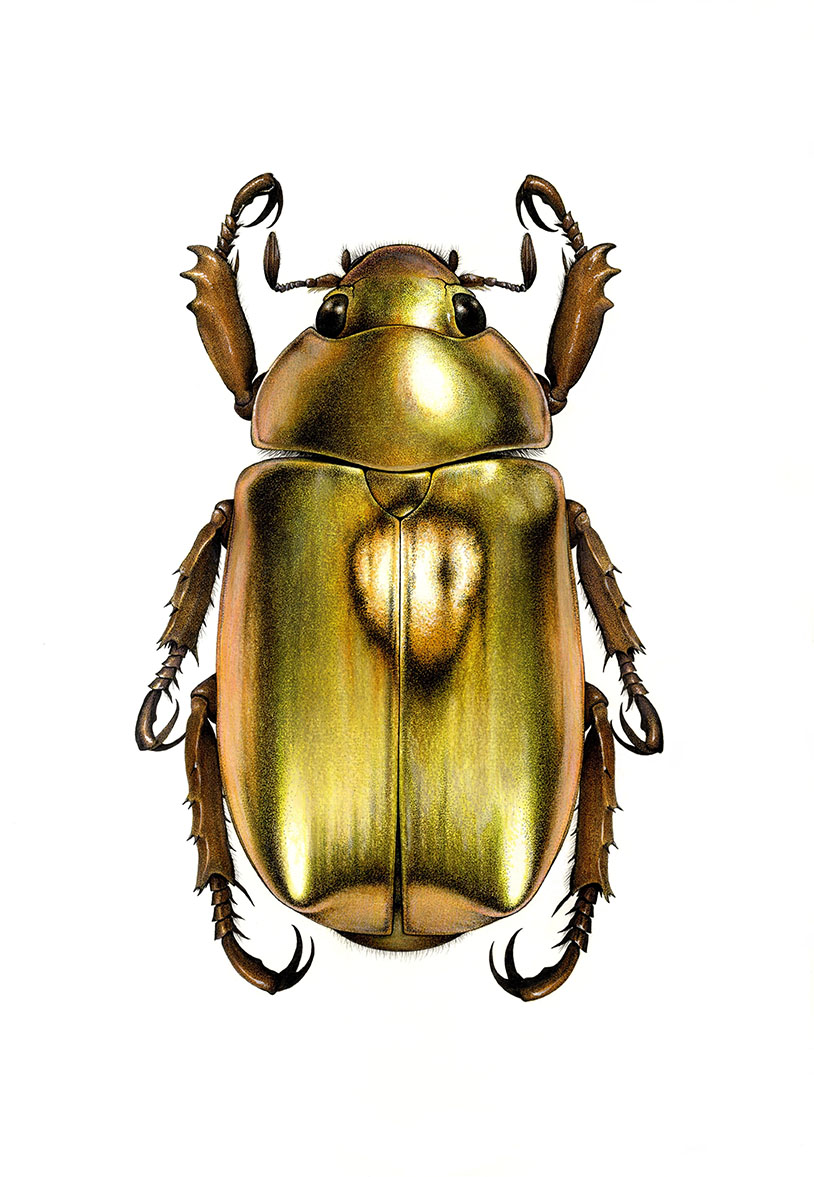
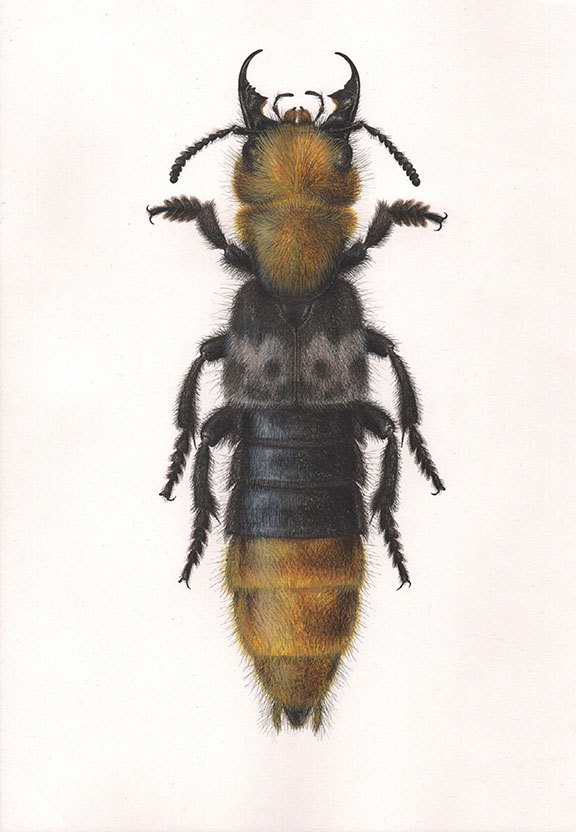
What’s your favourite spot for drawing?
I usually work from a studio in central London, which is also a working space for many other freelance artists and designers and is owned by companies which produce animations and advertising. This is great as it opens up a lot of learning opportunities, and just from the inspirational point of view it's always really good to see other working practices and other styles. It's important to have good lighting and enough space to really study the reference material, which is often dead insect specimens or photos of the subject taken from various angles (I also make practical use of magnifiers).
Where do you go for inspiration?
The vast majority of my inspiration comes from the natural world and the things I have observed. I have been fascinated by insects and other animals for years, and there is always something new to encounter or be shocked by. When I'm not drawing, I'm usually out in the forest or wandering around looking for interesting insects; I also keep a lot of the more exotic species of invertebrate as pets. There is nothing which can substitute observing the natural behaviour and development of any animal, so even when the final artwork is a static image, the subject needs to be understood in terms of motion, life-cycle and feeding to really grasp why certain features are the way they are – otherwise you are just copying shapes without knowing why they are present (or absent).
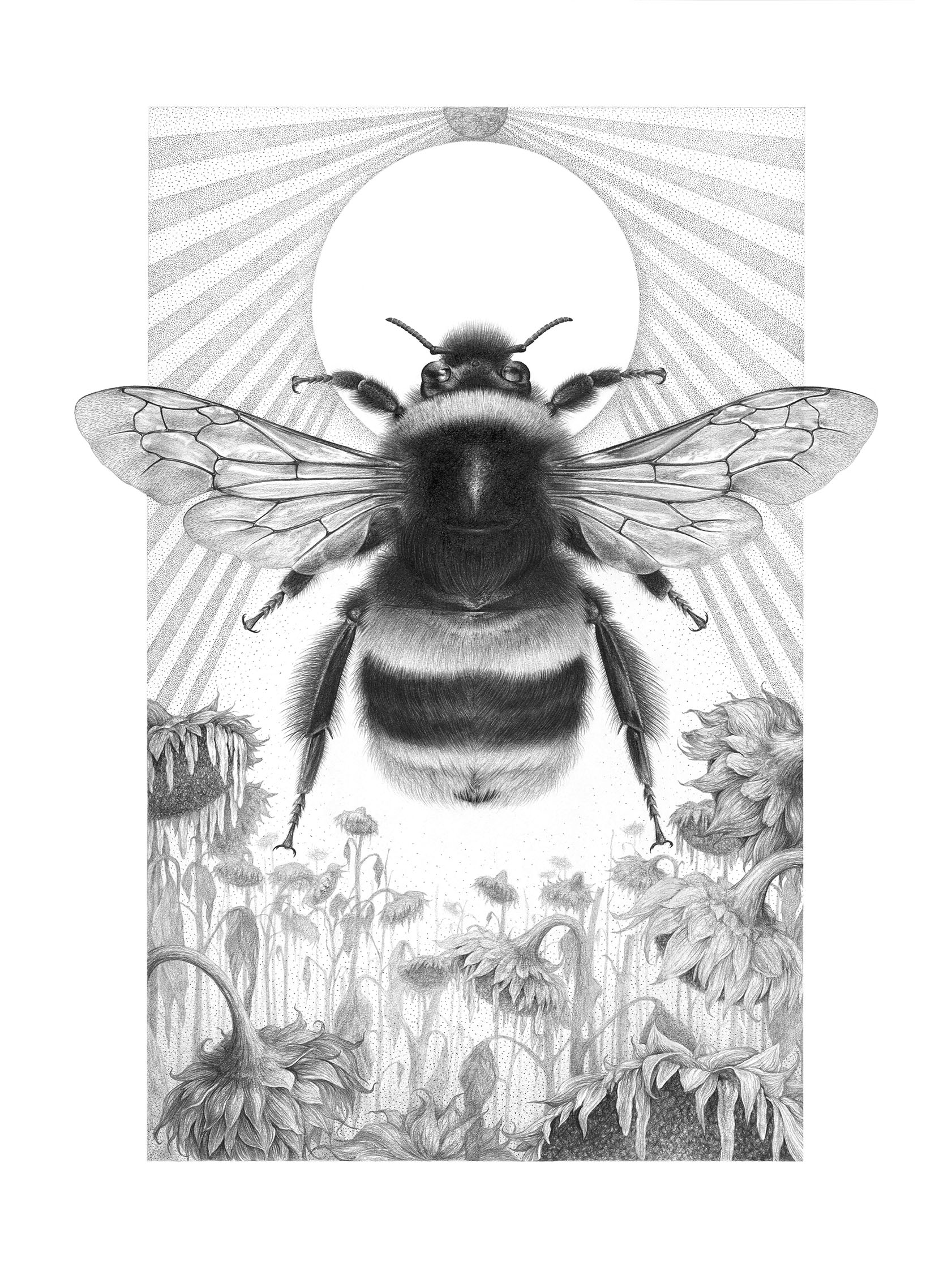
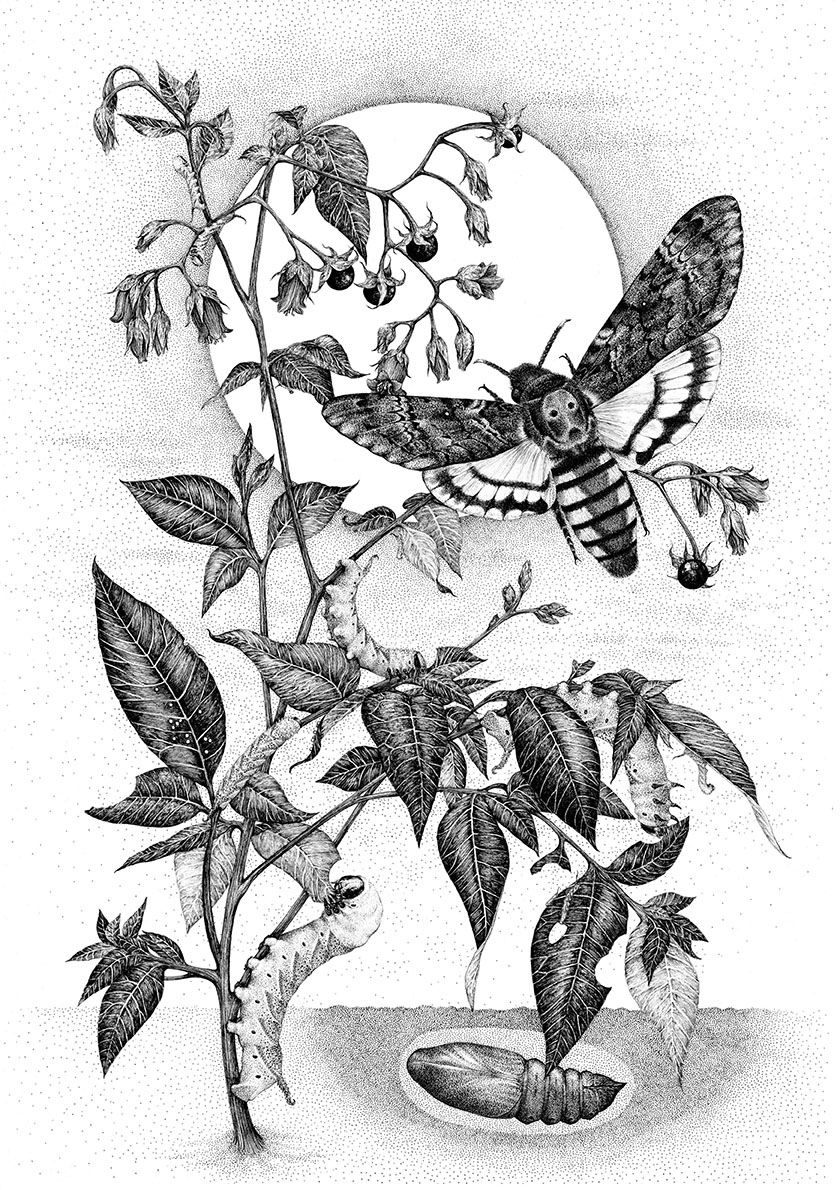
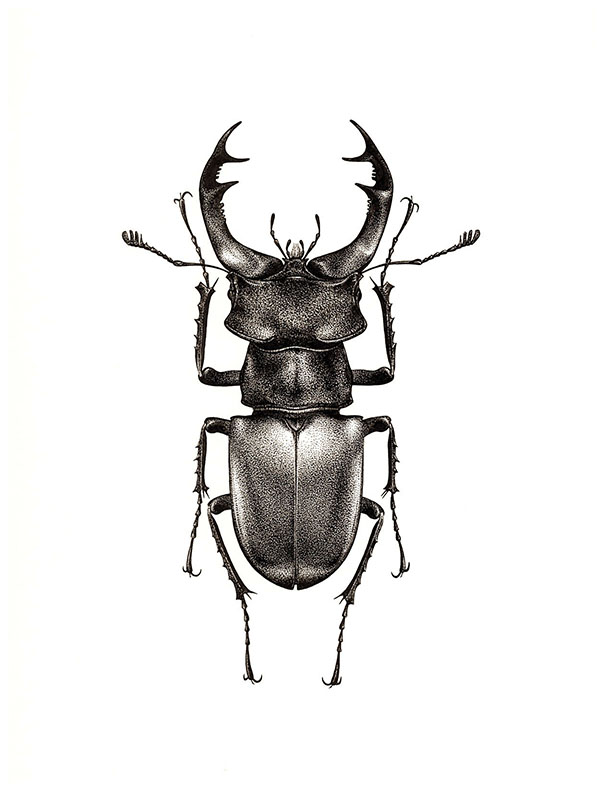
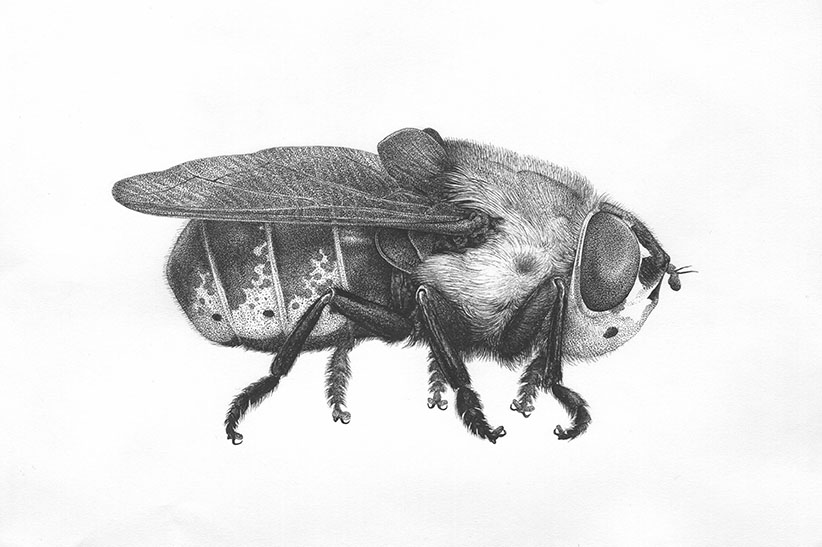
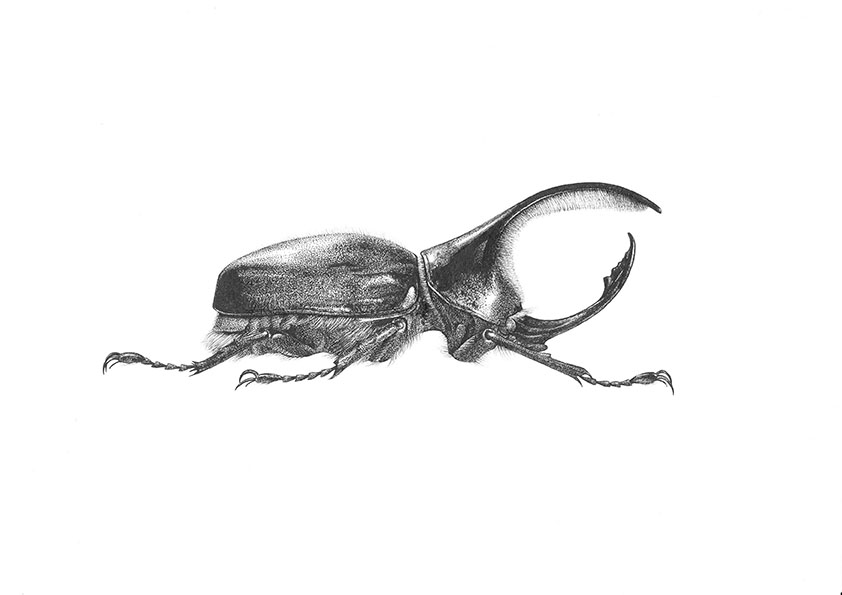
How did your interest in entomology arise?
When I was very young I'd always look at the insects in my garden – it was probably the sheer diversity and alien qualities which attracted me to them. There is nothing we can compare with them in terms of biology and anatomy, and yet we rely on them so heavily as a species, and they are so often overlooked or feared. I kept my first stick insects when I was around four years old, and from there on I always wanted to keep different species to see how they grew and changed so dramatically. I have also been collecting dead insect specimens for years; these provide the best source of reference material where the live counterparts cannot be observed.
Who are your heroes?
I have so many heroes in all different fields. Some of the most inspirational have to be David Attenborough, H.R. Giger, J.R.R.Tolkien and illustrators such as Shaun Tan and Richard Lewington.
How long does a typical insect or animal study take to do?
Time taken usually depends on size of the piece and whether it is full colour or not. In general I tend to work around A4 size unless the client specifically wants something larger or smaller – these types of illustrations can take around two days, although the subject can be a lot more complex to draw. For example a very hairy insect will always take much longer to illustrate than a more smooth-bodied species, but when working on full colour pieces the metallic tones and natural vibrancy is often very difficult to represent faithfully.
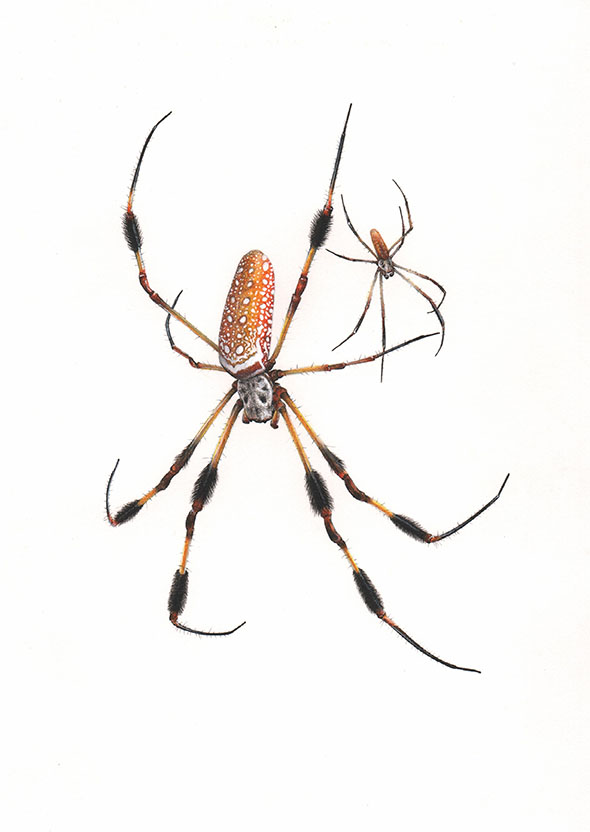
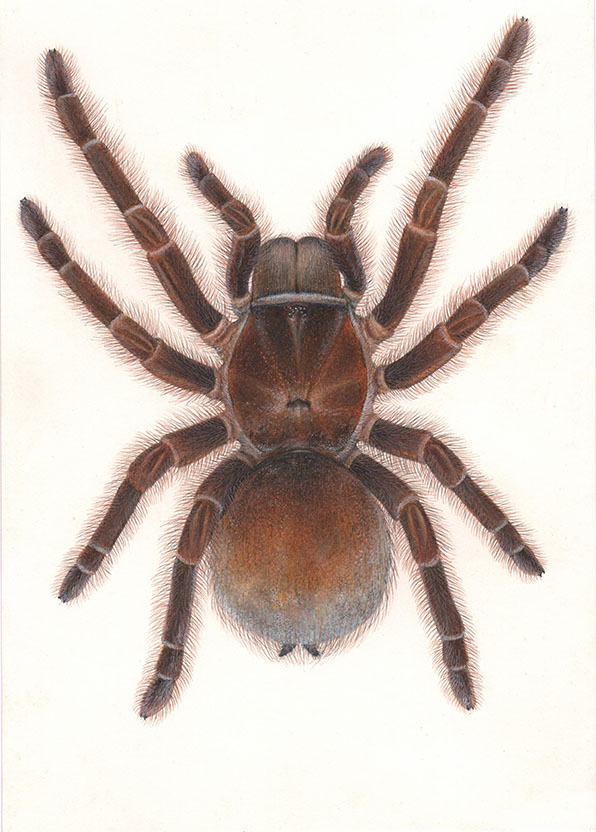
Tell us about a favourite recent project.
I am currently working on a 'Velvet Ant' piece. The species is Dasymutilla satanas, and they look really bright and fluffy, but the females pack a very powerful sting. It's a species I have never illustrated before, though I have always been interested in them, so it's great to be able to take the time to look at them in more detail.
What’s the biggest challenge of working in the way that you do?
One of the biggest challenges for the referential and scientific work is getting everything accurate. With insects it can be the most minute detail – such as number of bristles, or shape of genitalia – which can determine one species from the next. This is all down to observation though, and familiarity with the structure of insects – so I guess it's all in the practice.
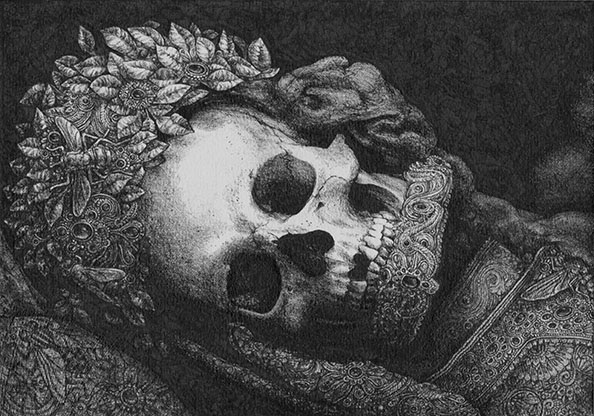
Where would you like to be in a year’s time?
Though I doubt it will be in a year’s time, I really hope to produce my own illustrated book one day. For now, I am still settling into the whole freelance world and trying to get commissions that interest and challenge me. I think in any creative field it's also that constant theme of getting your name and work out there.
What would be your fantasy commission?
Strangely enough, I have always had a dream of working on creature or character designs for film. This probably stems from fascinations with films like Jurassic Park, The Lord of the Rings and Alien. It would be amazing to design a whole world and all the creatures that inhabit it. I don't know how realistic this is in terms of a commission, but I am always working on my own imaginative themes and one day maybe those ideas will translate well into some sort of novel or film. I would love to work on illustrations for some form of field guide or other creative area which is also has a practical use.
insectopolis.blogspot.co.uk

